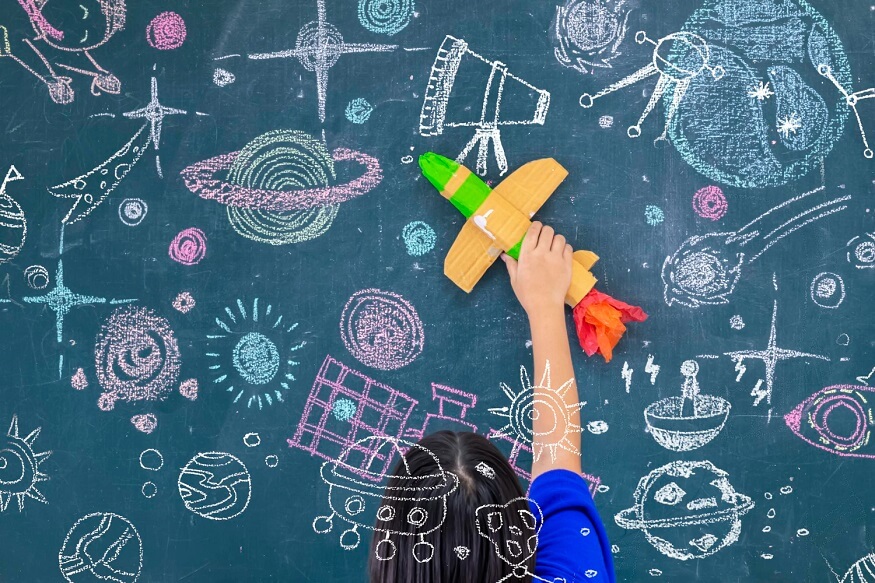The Renaissance signified the revival of art and culture, especially in Europe, during the 14th to 16th century period. Renaissance is a French word which signifies rebirth. The origin of the Renaissance can be traced to Florence in Italy. It is said to have been triggered exactly in 1401 attributed to a competition held in Florence to build the bronze doors to be placed on the Baptistery of the Florence Cathedral.
Also Read: 10 interesting ways to learn history
Rival geniuses Lorenzo Ghiberti and Filippo Brunelleschi competed for the same. Goldsmith and painter Ghiberti won the commission for the cathedral doors. This led Filippo Brunelleschi and Donatello to leave for Rome and immerse themselves in the study of ancient architecture and sculpture. When they returned, they gave birth to the rationalised art of the world.
From Italy, the Renaissance is said to have spread to Hungary, France, Spain, Portugal, Flanders, Germany, Poland, Britain, and Ireland. The American, African and Asian territories ruled by the European colonial powers of the time also did not remain untouched by this transformational era.
The Renaissance period during the 14th, 15th and 16th centuries involved a relook at awareness towards nature, formulation of learning and our view of individualism. Many historians believe that it is not that these aspects were never present in the mediaeval period, however, the way we looked at these aspects of our daily lives and surroundings saw a paradigm shift. This shift is primarily believed to be driven by societal changes in the form of an increased secularisation of society, an enhanced commercial economy, and an increase in social mobility. The Renaissance period in many ways marked our civilization’s foray from mediaeval to modern times.
The Renaissance period is said to mark a significant shift in the fields of art, architecture, politics, literature, exploration and science. The early traces of the Renaissance can be traced to Italy in the writing of Dante and the paintings of Giotto. The intellectual basis of the Renaissance originates in the Roman version of humanism and the emergence of Greek philosophy, such as that of Protagoras who propagated the idea that “man is the measure of all things”. Scholars during the Renaissance era focused on humanism and looked for more realism and human emotions and representations in their art and literature. Scientific discoveries evolved keeping man as the centre of all observations and individualism as the key philosophical tenet of scientific evolution.
Also Read: Indian History Chronology: Ancient India to Modern India
Flowering of Latin and a more vernacular form of literature. Development of linear perspectives and other techniques to portray more realistic imagery in paintings. Educational reforms influenced by the evolution of the thinking processes formed the basic tenets of the Renaissance. Politics evolved with newer customs and conventions of diplomacy with the world becoming an increasingly connected place and trade started to extend beyond geographical boundaries. Sciences evolved to a more observation and inductive reasoning-based philosophy. The evolution of commerce saw the introduction of modern ways of accounting and banking structures.
Giotto di Bondone (1267–1337) was the first to be credited with using perspective as a technique in paintings. However, it was the demonstrations of Filippo Brunelleschi (1377–1446) and the subsequent writings of Leon Battista Alberti (1404–1472) that established ‘perspective’ as an artistic technique. The evolution of perspective became a larger trend towards realism in arts. In all essence, Masaccio (1404–28) was the founder of Renaissance Painting. His compositions involved a high degree of intellectualism and naturalism in his conceptions, and grand monumentality in his compositions. In the artistic sense, the Renaissance era saw the emergence of polymaths such as Leonardo da Vinci (1452–1519), Michelangelo (1475–1564), and Raphael (1483–1520).
Da Vinci is also known as the Ultimate Renaissance Man, a true genius polymath for whom no field of study was foreign. In addition to being an artist, he also delved into anatomy, the nature of flight, and even the structures of plant and animal life forms. His many diversionary interests hardly left him any time to paint.
As a result, he managed to finish only a few paintings, though all legendary in fame such as Mona Lisa (1503–05, Louvre), The Virgin of the Rocks (1483–86, Louvre), and The Last Supper (1495–98; Santa Maria delle Grazie, Milan). Michelangelo’s creative genius emerged from his ability to conceive large projects drawing inspiration from the human form. His notable works of genius include the Pietà (1499; St. Peter’s, Rome) and David (1501–04; Accademia, Florence).
Michelangelo considered himself a sculptor, however, his best work remains the giant ceiling fresco of the Sistine Chapel in the Vatican. Raphael’s most notable work, School of Athens (1508–11), was created in the Vatican at the same time Michelangelo was painting the Sistine Chapel ceiling fresco.
The Renaissance era saw great advances in the field of sciences such as geography, astronomy, chemistry, physics, mathematics, manufacturing, anatomy and engineering. The propagation of innovation and scientific ideas received an impetus with the invention of printing technology.
Also Read: Top 10 Archaeological sites around India
On the contrary, certain historians such as George Sarton and Lynn Thorndike criticised the Renaissance period for slowing down the growth of science. They believed that Renaissance humanists preferred to study human-centred subjects such as politics and history over philosophy or mathematics. As time went by, consensus has grown on the positive contributions of the Renaissance period to the field of science, especially in areas such as Alchemy, Astronomy, Mathematics, and Medicine.
The Renaissance, as a unified historical period, ended in 1527 with the fall of Rome. The offshoots of the great artistic revival continued in northern Italy and northern Europe.









